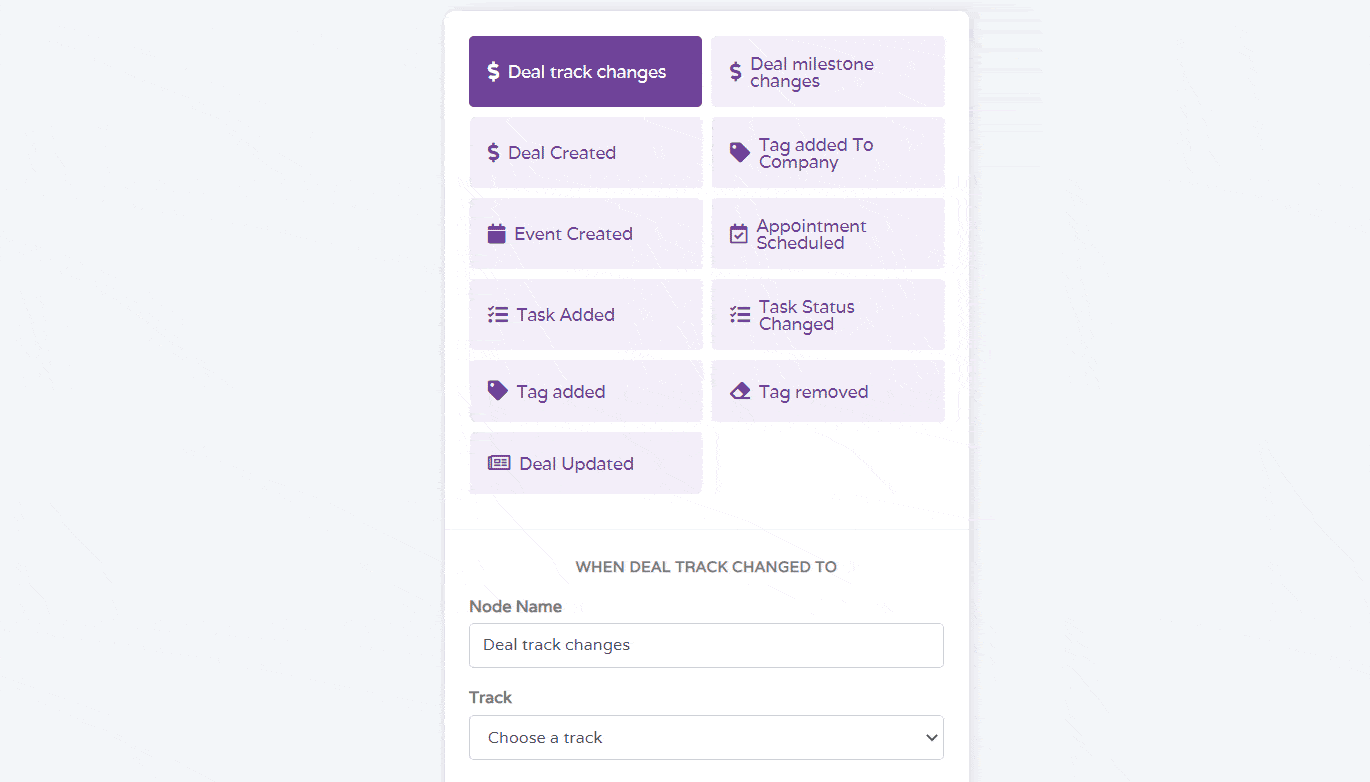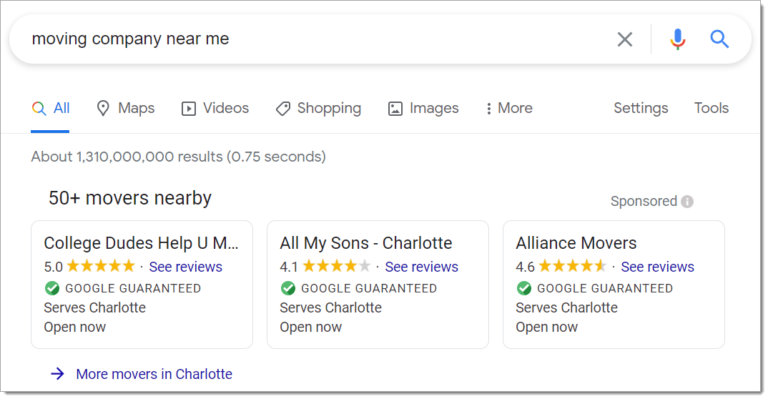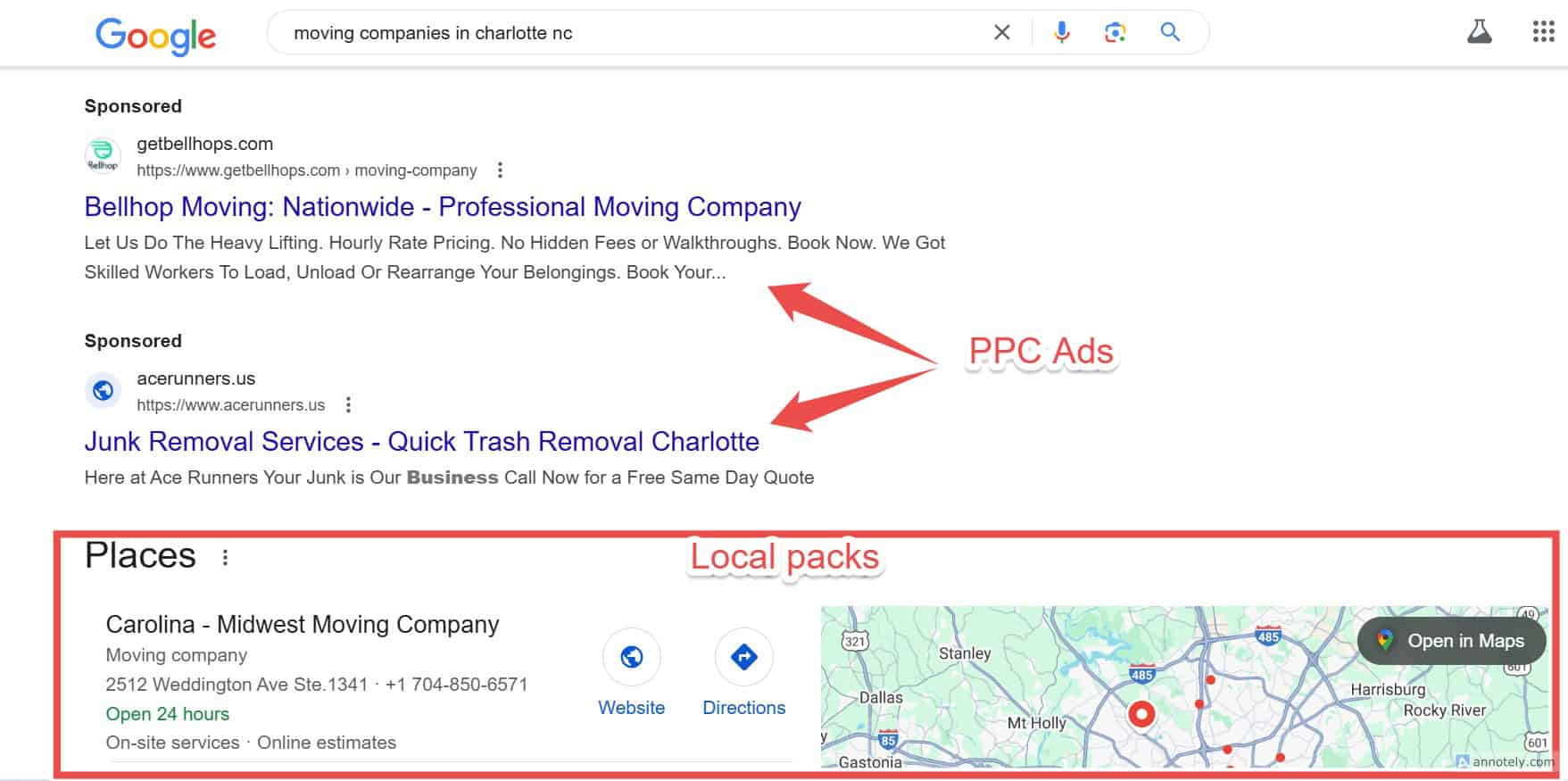With over 31 million Americans moving annually, moving companies have a large customer base to serve and grow their businesses. However, this success will depend on your moving company marketing strategy and ability to have a strong pipeline of leads.
Here is why: People don’t move every day. On average, a person moves about 12 times in their lifetime. So to be successful, you have to combine traditional and digital marketing strategies to reach and attract potential customers to your marketing funnel. Then, nurture them so that you come to mind first when they want to move places.
This way, you convert leads to paying customers at the right time.
In this guide, we will share nine moving company marketing strategies you need to master to generate leads, build trust, increase conversion, and scale your moving company.
Table of Contents
9 Moving Company Marketing Ideas for Business Growth
These ideas combine traditional and digital marketing strategies to help moving companies meet potential customers wherever they are–online or offline.
1. Understand the moving industry market
Due to its increasing size, the moving industry market is estimated to reach a revenue of $22.8 billion. Conducting in-depth research to understand your competitors, customer behavior, and forecast trends will set a solid foundation to position and market your business.
For instance, customers usually want a moving company they can trust to handle their belongings carefully, show up on time, and offer a seamless moving experience. You stand out from competitors by researching the industry to know what customers want and including it in your marketing communications.
2. Develop a strong brand identity
A company’s brand identity goes beyond the logo and colors. It covers the visual elements and the brand values that a customer experiences in the company, whether online or offline. These elements, when used consistently, work together to set a business apart from its competitors and create a strong perception about the business that potential customers can trust.
Since moving companies offer services that require people to trust them with their personal belongings, developing a strong brand identity is crucial for lead generation and conversion. Here are some actionable tips moving companies can implement:
Identify your unique value proposition
Your brand identity sets you apart from other local moving businesses. So, identifying your unique value proposition is the foundation for building a solid brand identity. Some important questions to consider include:
- Do you intend to focus on a niche, like residential, commercial, or local moving?
- Would you offer specialized services or complimentary services like home staging assistance, pre-move cleaning, or storage solutions?
Identify the services you offer and your brand messaging. Then communicate them effectively across your socials and company website.
Develop your visual identity
According to a study, 75% of customers recognize a brand by its logo, while 80% recognize a brand by its color. However, this brand recognition can only be achieved by consistently using the chosen visual identity elements.
Here are some ways you can enforce your visual identity:
- Include your brand elements across your social media platforms and your company’s website. This repeated representation keeps your brand memorable.
- Brand your moving trucks. They serve as mobile billboards, advertising your brand in high-traffic areas and building brand awareness.
- Design an employee uniform. This makes more customers perceive your brand as professional and credible.
- Brand your moving boxes to help drive brand visibility. The boxes act as a subtle advertising tool, reaching more local moving leads
3. Implement digital marketing strategies
Research shows that 98% of customers use the Internet to search for information on local businesses.
It makes sense to include online marketing strategies so that when potential customers search online, they can find relevant information about your brand.
Some digital marketing strategies to put in place include:
Local SEO
SEO helps search engines understand a web page and determine its relevance to a user’s search query.
Local search engine optimization focuses on improving web pages so that search engines find them relevant for local searches like ‘near me’ searches. Since moving companies offer a location-based service, local SEO is the most suitable moving company SEO to implement.
Implementing local SEO makes you more visible to local leads searching for a moving company within their location.
Here is a checklist to build a strong local SEO strategy:
Have a completed Google Business profile
This is important as it helps your moving company appear in the local results on the search engine result pages (SERPs), giving your business more visibility.
For instance, a Google search for ‘moving companies in Chicago, Illinois’ resulted in the following.
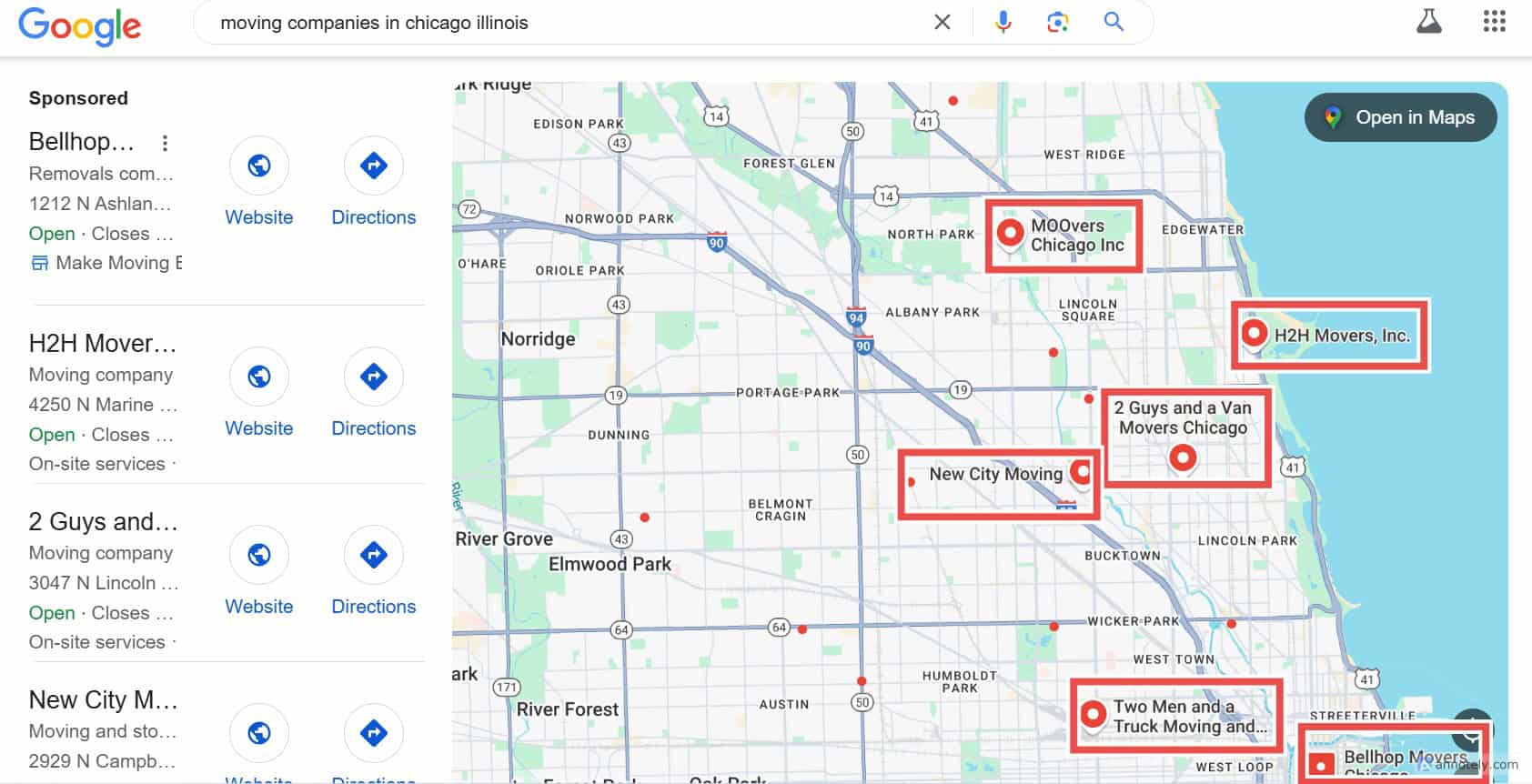
It’s also important to include location-based landing pages like ‘top movers in Miami’ to cover the regions where your moving service is rendered.
Optimize your website speed
This factor influences the behavior of your website visitors. Potential customers will spend more time on moving company websites that load quickly.
Optimize your website for mobile
Designing your website for mobile first increases the Google search engine ranking of your website. It also encourages potential customers to spend more time on your website.
Other local SEO strategies to implement include:
- Ensure your name, address, and phone number (NAP) are consistent across the web directories, Google Business Profile, and social media used for business listing.
- Embed a local schema code that helps search engines categorize your local business and connect locations.
- Build backlinks from websites in the region/area to develop authority there.
Beef up your content marketing strategy
Many businesses maximize content marketing to build authority and nurture leads.
Since content marketing is effective in attracting organic traffic, it makes sense to use content marketing to target potential customers. As a moving company, content marketing involves targeting specific local keywords, identifying your target audience’s questions, and creating content that answers them.
In this image below, Steinway Moving and Storage increases its visibility and website traffic by answering likely questions movers have.
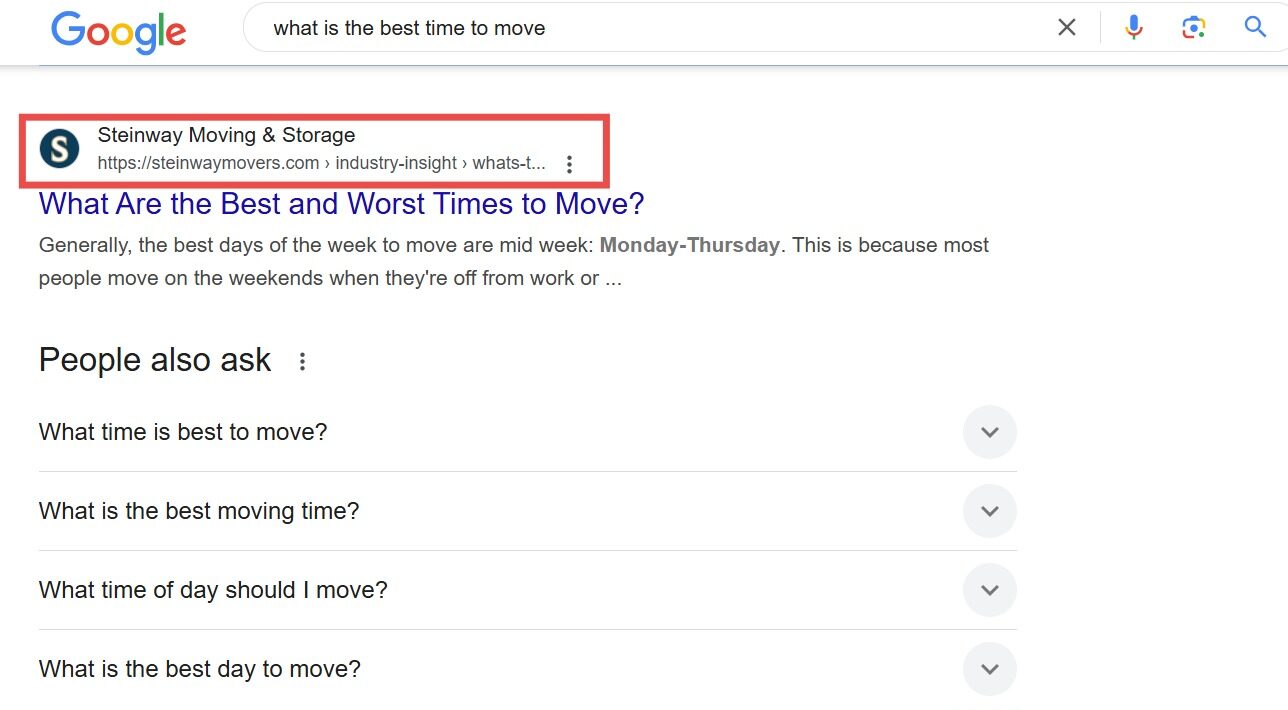
Leverage social media marketing
Social media targeted advertising is a great way to attract quality moving leads through video and written content.
Facebook has a large audience base, making it a great social channel for moving companies to raise brand awareness and attract high-quality leads through Facebook advertising. Instagram is also a good platform to explore and share high-quality visuals about your moving company.
Additionally, commercial moving companies may find it more appealing to leverage LinkedIn to get in front of more customers.
Many moving brands use a mixture of social platforms to reach their customers and generate more leads. However, managing multiple accounts can be overwhelming, especially for smaller businesses.
So, a social media management tool is helpful to streamline and organize your social media.
Nurture leads through email marketing
Email marketing is essential because it is a direct communication channel between businesses and their subscribers.
Moving companies can leverage this channel to nurture their leads. However, you need to apply caution so you don’t have a high unopen rate or, worse still, massive unsubscribes.
As we established early in this article, people don’t move so often, so imagine getting an email twice every week from a moving company about their services. The chances are excellent that you’d unsubscribe because you find the emails monotonous.
Here’s what to do instead: Segment your subscribers into past clients and potential clients.
For past clients, you can send a monthly newsletter, referral program updates, and offer gift cards for referrals. You can also include complementary services you offer, like post-move services.
For potential clients, set up automated emails based on actions users take, like a welcome series for new subscribers and a series of campaigns to nurture clients through the sales funnel.
You can do all these easily using EngageBay’s email automation software.
4. Leverage customer reviews & testimonials
A major deciding factor for choosing a moving company is trust.
Beyond what the moving company says, customers are more likely to trust previous customers who have experienced the company’s service themselves.
This is where reviews and referrals come in.
Reviews on online listing sites like Google Business Page and Facebook can increase conversion by 270% and improve local SEO ranking.
However, only 1% – 5% of existing customers leave a review after purchase. Moving businesses must, therefore, be intentional about gathering customer reviews and testimonials.
Some tips for gathering and leveraging customer reviews include:
Automate review request
Sending out review requests after a customer makes a purchase increases the chances of a customer leaving a review.
These review requests can be automated and sent via email or SMS. Some review request best practices include:
- Include review requests in the post-purchase ‘Thank You’ email or SMS
- Point customers to where to leave a review by including a link to the review site. You can also use tools like Nicereply or Wufoo to embed light star rating forms that allow customers to click a star and leave a rating.
- Get customers to leave a review by offering an incentive. This can be a gift card or discount on future services.
- Place QR codes with a small description like ‘how was your move’ on packing materials or invoices. Scanning the code should direct your customers to review sites where they can make their reviews.
Reputation management
The first step to building and managing your business reputation through customer reviews is to respond professionally to the customers’ reviews, whether positive or negative. This informs your customers that you respect and value their feedback.
In handling negative feedback, avoid sounding defensive. Instead, acknowledge the issue, apologize, and handle it professionally.
Here is a good response example for negative feedback:
“Hi [customer’s name], we’re sorry to hear about your experience. We take customer satisfaction seriously and would love to resolve this. Please reach out to us at [email] or call [number] so we can make things right.”
Request for video testimonials
A video testimonial builds brand trust faster than written feedback. This makes this testimonial format more effective in attracting and converting new leads.
Since leaving a video testimonial takes more time than just a review, businesses can request this from happy customers who are overly satisfied with the moving service they received.
To make this less stressful for them, provide professional assistance to record and edit the testimonial.
Showcase the collected reviews
Now that you have the reviews, the next step is to showcase them on your marketing channels for potential clients to see. Here are some places you can place your reviews:
- On your website homepage. This encourages the website visitor to explore your moving services further.
- On your landing. This helps build trust and encourages the new customer to take action.
- Share customer reviews or embed testimonial videos in emails sent to new subscribers to build trust.
- Social media channels are also a good place to share customer reviews in the form of customer stories.
5. Double down on offline marketing efforts
Since moving services are location-based, marketing for moving companies should include an offline marketing plan to increase brand visibility in the locations where your moving service is offered.
Effective offline marketing strategies include:
Billboard advertising
Billboard advertising is still a relevant moving company advertising strategy, especially in areas with high traffic. Since these static rectangular structures continuously advertise a brand to every passerby, they increase the chances of attracting a local lead.
This traditional advertising strategy can be made more effective by trying new elements like 3D designs or making the billboard design using eco-friendly materials.
This way, the billboard catches the attention of more local moving leads in the area and tells a lot about the moving company’s brand values.
Use branded trucks and uniforms
Branded uniforms and trucks elevate your moving company’s image by giving it a professional look that increases brand recognition and credibility. Include your brand name, logo, contact details, and a clear CTA. As these moving trucks move through the city, they generate countless impressions and increase brand visibility.
Launch a direct mail campaign
Since moving companies attract local moving leads, leaving direct mail in the mailbox of their potential customers is a strategic advertising strategy to adopt.
This is because direct mail feels more personalized and intimate than other digital marketing channels.
To pull off successful direct mail campaigns, moving companies must first curate a list of local moving leads, design personalized postcards with an email body that highlights the benefits of patronizing their business, and finally, direct the target audience to their online accounts.
Sponsor community events
This moving company advertising idea creates a positive reputation for the brand.
By hosting events in the community where they offer moving services, they promote brand visibility and encourage word-of-mouth advertising.
Some moving company advertising ideas for community events may include setting up branded booths, giving valuable moving tips for free, or providing branded trucks for charity/donation drives.
These are like free-moving company advertising that builds community goodwill and increases brand visibility.
6. Build solid business partnerships
Collaborating with other businesses is a profitable strategy for moving companies to reach more moving leads at a lower marketing cost.
Some strategic partnerships for moving companies include:
- Rental agencies and real estate brokerages: These agencies have real estate agents who work directly with people buying, selling, or renting new homes.
- Storage facilities: People may need a temporary storage facility for various reasons. They would also need a moving company to move their properties to the facility.
- Home renovation companies: People renovating their homes may need a temporary residence and moving services to get them and their belongings there.
- Interior designers: Moving services are required to move furniture for interior decoration.
- Junk removal and cleaning services: New homeowners will seek out junk removal or cleaning services before moving into a new apartment. Partnering with businesses offering this service helps moving companies reach more local moving leads.
Business partners can cross-promote their services by featuring them on their websites. This increases visibility on both ends.
7. Experiment with paid advertising
Moving companies can use paid advertising to reach high-intent leads while actively searching for moving services.
While implementing SEO increases website traffic over time, paid advertising or search engine marketing increases a website’s visibility instantly by appearing above organic searches.
Some paid advertising models for moving company marketing include:
Google local service ads (LSAs)
This is a specialized kind of Google Ads designed for service-oriented businesses like moving companies.
This model of advertising requires businesses to pay per lead. This means that moving companies that use this advertising model only pay Google when a lead contacts them directly through the ad.
Local service ads also get first place on Google search result pages, appearing above pay-per-click ads and organic search results.
To further increase the chances of conversion, Google makes Google Guaranteed badges available for businesses that use the LSA ad model and pass a screening test. The badge shows potential customers that Google has approved the business and its services.
This increases trust and heightens the possibility of conversion.
The Google Guaranteed badge also reassures clients and removes risk by offering the possibility of reimbursement if customers are not satisfied with the service employed through LSA.
All of these perks make LSA a cost-effective moving marketing method for quickly generating local moving leads.
Pay-per-click advertising (PPC)
This model of Google Ads requires businesses to pay every time a potential customer clicks on their ads.
It is perfect for moving companies whose advertising goal is to drive website traffic and brand visibility. On search engine results, PPC ads appear below LSAs but above organic search results and local packs.
To ensure the best value from every PPC ad click, moving companies should:
- Use radius targeting to geo-target areas where they offer moving services.
- Bid higher for locations with high relocation tendencies.
- Target high-intent keywords to reach potential customers who are ready to book a move
- Ensure that the PPC ad leads customers to a landing page with a compelling and clear copy
- Use display ads to retarget leads that click but do not take action.
- Use call-only ads as potential customers seeking moving services may prefer to speak to movers and quickly settle moving plans.
Both LSA and PPC are effective short-term marketing strategies for reaching quality leads.
The moving company’s choice of ad model depends on the company’s marketing budget and goals.
8. Set up seasonal and dynamic pricing strategies
A unique fact about the moving company market is the demand fluctuations.
For movers, January and February are months with a low demand. By setting up these dynamic pricing and marketing strategies, moving companies can ensure some revenue inflow and make up for months with low demand.
Premium pricing for high-peak seasons
When demand for moving services is high, you can charge more.
This higher cost also compensates for seasons with lower demands and keeps the revenue generated by the moving company steady. Moving companies can also charge more for urgent moving requests. When a move is urgent, a customer has limited options.
The customer focuses on finding a moving company willing to move urgently, and normally, they are willing to pay more.
With this in mind, moving services can set up a tiered pricing system based on how soon a move is booked.
For instance, a move booked 2 weeks in advance can go for a standard price. Those booked a week in advance can have a 10% extra charge. And those booked 2 days in advance can have a 20% extra charge.
Offer discounts in low-peak seasons
Moving companies can encourage leads by offering moving services at a low price.
Some customers will be willing to travel on a weekday if the weekend price is beyond their budget.
Moving companies can also target audiences, like students and retirees, with more flexibility to move and offer them a discount.
Package your services into bundles
Generally, customers perceive bundled services to offer more value than a single service purchase does.
You can bundle services based on value offerings.
For instance, you can have the basic package to offer only moving services, the standard package can offer moving services and packing materials, while the premium package can offer moving services, packing materials, and full packing and unpacking services.
9. Track and measure performance metrics
This is a crucial aspect of moving company marketing.
Without tracking and measuring moving company marketing efforts, optimizing and maximizing marketing ROI would be impossible.
Some critical performance metrics to measure for moving companies include:
Cost per lead (CPL)
Measuring the cost of acquiring a single lead in the moving company’s marketing channels informs you of the cost-effective channel for lead generation.
Movers can then shift more marketing budget to those channels to attract more local moving leads.
CPL = Total ad spend/Total leads generated
Website conversion rate
These metrics indicate if the company’s website is effective in converting leads to take action.
This action can be to submit a quote request form or book a move. A low website conversion rate prompts movers to optimize their websites using CRO strategies.
Offline conversion tracking
Movers can connect offline conversion tracking of Google ads to their calls to track phone calls from clicking an ad. Sales staff can also ask leads where they heard of their moving company. This lets the mover know which offline marketing effort is yielding the most results compared to digital marketing.
Once these metrics are measured, movers can use A/B testing to try out different versions of CTA, landing pages, or ad copy to understand what works best for their unique moving company market.
Conclusion
The moving market industry is a unique service-based market that relies heavily on trust and word-of-mouth referrals.
Due to this market’s demand fluctuations, movers must implement dynamic pricing strategies like offering bundled services and discounts to ensure a steady revenue inflow even in low-demand seasons.
Though the moving market service is location-based, moving companies need to apply a combination of offline and online marketing models to thrive.
The moving company advertising strategies we have shared in this guide help movers reach more local moving leads, convert them to new customers, and maintain a relationship with existing customers.
However, moving companies must track and measure important metrics to get the best out of their marketing efforts. They can then apply A/B testing to optimize and get the best result suitable for their market.
An older version of this blog post was authored by Priya Anand.

